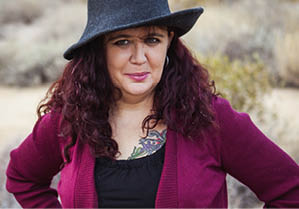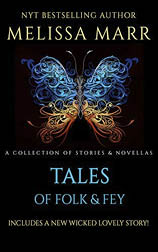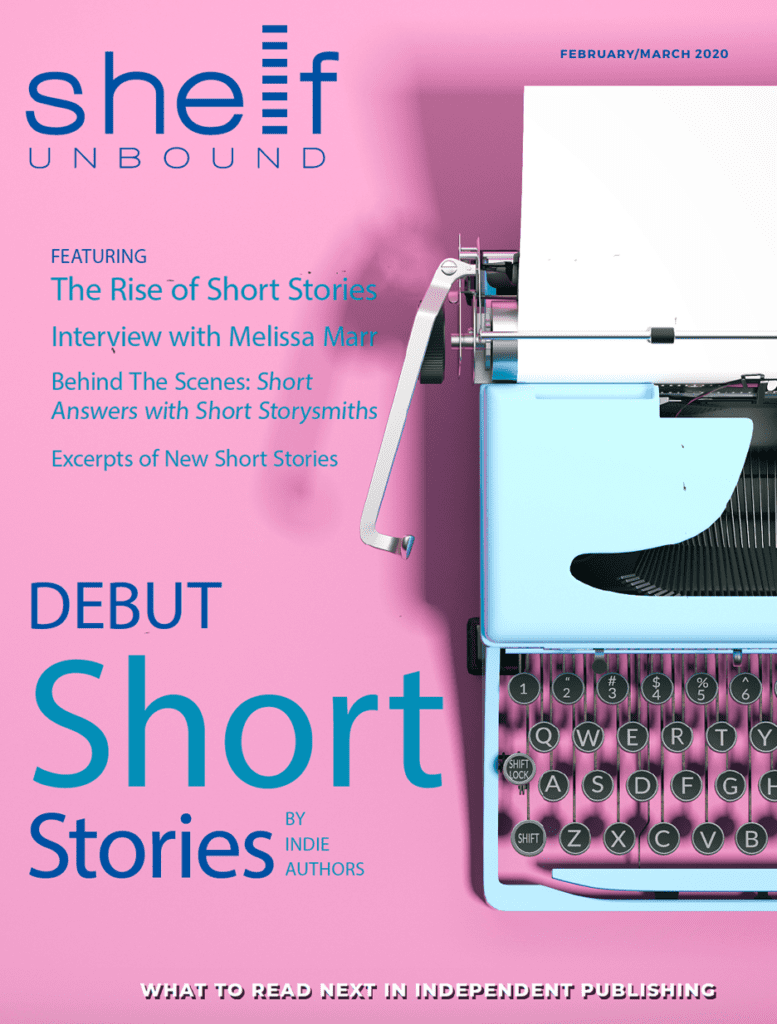Author of self published Tales of Folk & Fey: A Wicked Lovely Collection.
by Sara Grochowski

Melissa Marr’s young adult first novel, Wicked Lovely, was published in 2007 by HarperCollins and she’s since published standalones and series for adults, the middle grade audience, and children. In recent years, Marr has continued to publish through traditional means, but has also successfully self-published and connects with fans through Patreon. She spoke with Shelf Unbound about the appeal of self-publishing, what she’s learned, and what’s next.
Author Photo Credit: Sara Tiberio
When was your interest in self-publishing piqued?
MM: When friends started trying it years ago. I’m always interested in new things. Literally, I’ve tried short fiction, manga, screenplays, middle-grade, YA, adult fantasy, adult romance, co-authoring, editing anthologies, prose NF, poetry, and am currently working on a book with my photos and words for Penguin… In my not-work, over the last 3-4years, I took up kayak, rock-climbing, historical sword fighting, Pilates, as well as yoga and traditional metalwork jewelry making (silver, not beads). I like learning. Some stick (kayak, sword). Some don’t (yoga, rock climbing). Literally, I think it’s why I am in the world: I need to learn and try new things.
As someone who has been traditionally published, what appealed to you about self-publishing?
MM: Learning how it works. Marketing and then seeing the numbers move or not. I actually tried this with a group of friends in 2015 or so. We used the collective name of Payge Galvin to release one book a month. (RT Booklovers and other outlets covered it.) Before that, I had a Bookscan subscription to chart the efficacy of marketing efforts. I organized group tours. I experimented with where and how I advertised. I’m all about understanding the ways things work—or don’t.
Was there anything that surprised you about the process or that you wished you’d known earlier?
MM: Not really. I did scary amounts of research. Asked questions. Listened. I adjusted mid-stream, too. I’ve always paid for an external copyedit, so I already did that. I was always actively involved in my covers, so I still do that. It’s in my last decade’s worth of contracts that I get a voice in selecting voice actors for my audio. I’ve charted where my books sell well, and suggested tour stops and events based on it. I’ve been hands-on since my second novel, so that really helped.
Do you feel anything is lost by opting out of the traditional publishing?
MM: I’m not opting out. It’s like diversifying, I think. I still have novels coming out of NY. Penguin will release a children’s novel in 2021, a picture book in 2021, and my photographic book in 2022. I’m at the “greenlight” stage for a graphic novel with DC Comics. I have an Audible Original psychological thriller in 2020—as well as a Wicked Lovely prequel novel I’m doing indie. I like trying different things.
And I think it varies by genre. In children’s literature, libraries are critical. I don’t think I’d want to do my kidlit books indie because of that. Romance has more of an ebook market, as do books with established readership. Doing a Wicked Lovely prequel, as I am, in indie lets me reach the readers interested in that without worry. A photographic book on wild horses? That’s more NY. Audible—which is between NY and indie in my mind—is great for my thriller. I may sell print or go indie. NY thought it was “too dark!” so I intended to do indie, but then Audible said, “Well, hello there!”
Would you recommend self-publishing to an author just starting out? Do you feel having been traditionally published gives you an edge when it comes to self-publishing endeavors?
MM: It depends on the objective. I teach PT and I recommend both indie and traditional. I suggested one student writing paranormal romance consider indie, whereas another one writing a middle-grade magic realism I thought would be better suited in trad. There is no “one answer.” Like cooking…each week, I use my stove, oven, instant pot, and slow cooker. It all depends. This week, I had a short story release in a print journal. In November, another released in an online journal. Both found readers. In February, I’ll be in an indie anthology with about twenty other fantasy writers. I’m proud of all three.
The edge part, I think, I answered in an earlier question. I’ve spent fifteen years learning about all sorts of parts of the industry, so that helped. I, quite literally, would attend conferences to collect ARC to read the marketing plans for lead titles, draft grids, chart results and apply that to my own publishing requests. I’m very data-centered. I’m not precious about it. I’d bet I could’ve learned a lot of it if I was in strictly indie, too. Experience helps.
Since July 2018, you’ve utilized Patreon to reach fans and readers. What appeals to you about this platform?
MM: Accountability. I love the sense that I owe pages to readers. It makes me feel pressure, which is great for me. After my stroke (2018), I was depressed. I’d adopted in 2012, and my son was very sick. Then in 2016, I had six hospital events (for me not him!), and then I had the stroke in 2018. Patreon was a way to ease myself back out of my anxiety. I sold assorted picture books (2013, 2015, and 2018) and my middle-grade duology in 2017, but I was worn down by my health. I considered quitting writing entirely, and I had to live entirely on my savings and odd gigs from 2016 to 2019. I couldn’t produce novels quickly, and my limited mobility meant I had to focus on health—hence the Pilates, kayak, sword, rock climbing. I didn’t want to die. So, writing was secondary. Indie and Patreon have been part of finding my way back to writing longer works and more frequent work again.
How have readers responded to these new ventures? Have you tweaked your approach based on feedback and data?
MM: Initially, I wrote because of my kids, who asked for a new chapter. Then it was editors. Now, I’m creating deadlines because of Patreon. So, I don’t think it’s new. It simply is another route to create pressure I needed—and let me know there are readers.
And I’m not sure that readers care how they get story as long as it’s in the format they want and via the vendor they want. I need my picture books in libraries, and my Wicked Lovely stories available in print as well as ebook. I tweak in that I offer stories in stand-alone e-format, bound in paperback print, and in a few cases, a hardcover. With my clean YA faery book (The Faery Queen’s Daughter), I also sold audio rights because readers asked for that. I’ll get some of it wrong, but . . . I am human.
What’s next for you in 2020?
MM: My thriller, Pretty Broken Things, comes out as an Audible Original. I have my indie Wicked Lovely adult prequel out in June (ebook pre-order live now, print pre-order links to come). I just finished a weird adult fantasy book (A Half-Dead Witch) that may start a series. (I initially wrote it to cope with stress after a rattlesnake bite this year that caused some very vivid nightmares.) I’m finishing photography for Wild Horses (Penguin 2022) and awaiting the verdict on my DC Comics graphic novel. After that, I work on my contracted middle-grade for Penguin. And, you know, avoid rattlesnakes and strokes!

Tales of Folk & Fey
Read an all-new Dark Court short story. “Love Hurts” catches up with Irial, Niall, and Leslie—and offers clues about the upcoming Wicked Lovely prequel novel, Cold Iron Heart. Tales of Folk & Fey also includes “Old Habits” and “Stopping Time” (previously published Wicked Lovely Dark Court stories) and two previously published selchie short stories (“Awakened” and “Love Struck).

Continue Reading…
Article originally Published in the February/March 2020 Issue “Short Stories”
